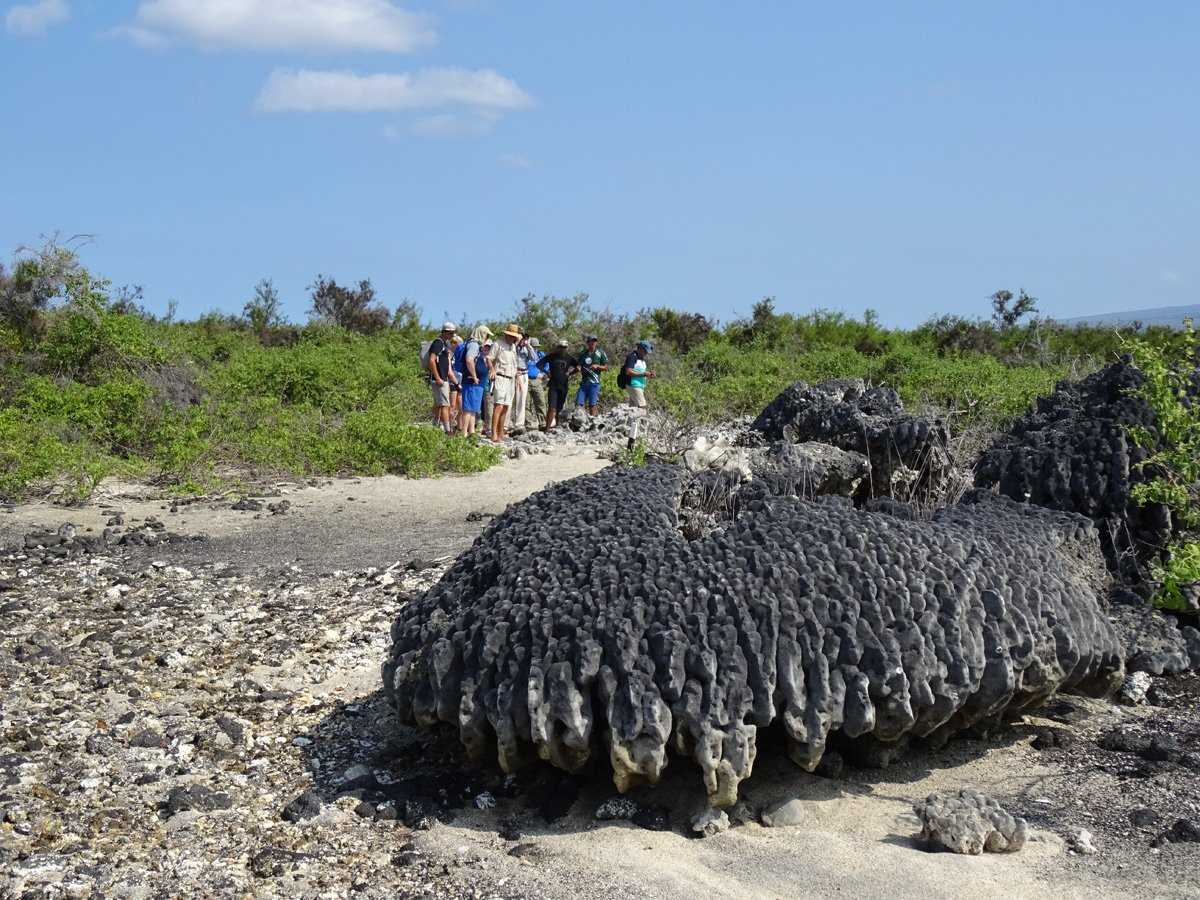Our journey on Isabela began in the western realm of this island. We landed at Urbina Bay, where several excursion options were offered. Our first group went for a long hike to an area that was previously the ocean floor, before it was uplifted due to environmental shifts and rose up out of the water. Oddly enough, large coral heads still remain, reminding us of the impressive effects of geology on the islands. The second walk was a short hike to the old shoreline, and some groups were able to see a couple of Galapagos giant tortoises. Both of our groups observed Galapagos land iguanas, which were spotted along the trails and or seeking shade underneath plants. After these walks, everybody returned to the shore and had the opportunity to swim and refresh in the cool water.
At the end of the morning we returned to National Geographic Endeavour and headed north, towards Tagus Cove. Soon after dropping anchor, we went kayaking, and later snorkeling in the deep water along the cliffs of this cove. Our guests were delighted by sightings of green sea turtles, Galapagos penguins, and lots of different fish. After our return from the aquatic activities, we went on a hike while some of our guests went on a Zodiac ride along the coast of Tagus cove. The coast was surrounded by a thick fog that marks the end of the warm, rainy season and the beginning of the colder dry season. The change can be gradual, however this year it is changing very quickly, and it is always a remarkable event, resulting in changes to the water and air temperature as well as in some of the species of animals. For example, the brown algae that marine iguanas feed on is becoming more abundant, and flightless cormorants are also in the beginning of their mating season; this afternoon we observed a couple right at the landing site in Tagus cove.
As we returned to the ship after a full day of activities, we watched as the fog descended on the hills and volcanoes around us. Our journey continues tomorrow, in these beautiful and enchanted islands.







